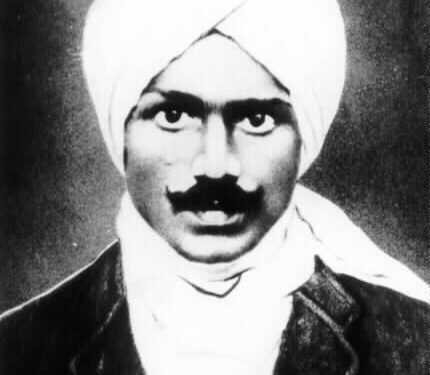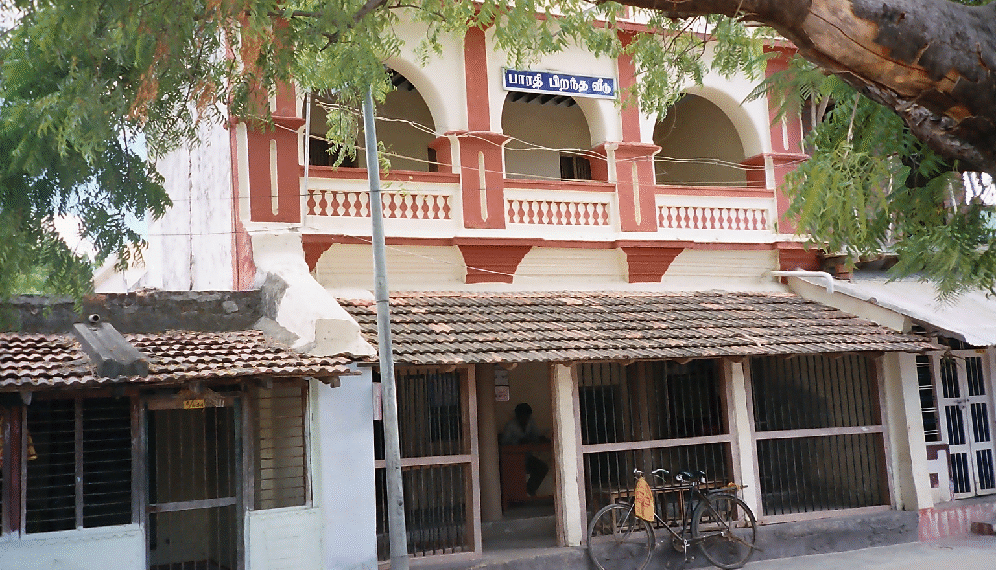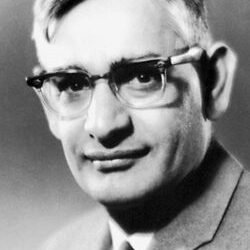Introduction
Subramania Bharati (1882–1921) fused poetry, song, and journalism into a potent nationalist voice, crafting luminous Tamil lyrics that called for freedom, social equality, women’s emancipation, and an end to caste oppression. Revered as Mahakavi Bharati, his works like Panjali Sabatham, Kuyil Pattu, and Kannan Pattu reshaped modern Tamil literature and energized the independence movement’s mass cultural repertoire.

Life and context
Born in Ettayapuram, Bharati traversed courts, printing presses, and political circles, editing journals such as India, Swadesamitran, and Vijaya to campaign for liberty, equality, and fraternity. Hounded by colonial warrants in 1908, he spent a decade in exile at French Pondicherry, collaborating with revolutionaries and writing his most influential poems before returning to British India and facing imprisonment. His polyglot learning and reformist zeal fed a poetic vision that condemned child marriage and caste, uplifted women, and envisioned a modern, just India.
Signature works and themes
Panjali Sabatham (1912): An epic allegory of the freedom struggle through Draupadi’s vow, reframing India as Panchali and colonial injustice as Kaurava tyranny; its cadence and chorus-like refrains made it a staple of protest recitation.
Kuyil Pattu (1912): A lyrical nature meditation where the koel becomes the poet’s muse, fusing romantic imagination with a quest for truth and inner freedom.
Kannan Pattu (1917): Songs to Krishna blending bhakti with humanism, often read as dialogic explorations of love, play, and divine immanence in everyday life.
Sudesa Geethangal (1908): A cycle of patriotic songs that set the Swadeshi idiom to memorable tunes, urging moral courage and national awakening.
Language, music, and modernity
Bharati’s Tamil was at once classical and radically modern—short, singing lines, vivid metaphors, and direct address suited to public performance and singing. He refashioned folk and classical forms—pattu, viruttam, kummi, pallu—into massable lyric vehicles, enabling rallies, classrooms, and homes to become stages of political pedagogy. His songs move seamlessly from drums of revolt (Murasu) to didactic primers (Puthiya Aathichudi, Paappa Pattu), cultivating civic virtues alongside patriotic fervor.
Journalism and political courage
As editor of India (printed on red paper, with cartoons), Swadesamitran, and Vijaya, Bharati sharpened Tamil political journalism with satire, graphics, and the watchwords Liberty–Equality–Fraternity. Bans, raids, and exile followed, yet he continued publishing from Pondicherry, engaging with Aurobindo, Lajpat Rai, and V. V. S. Aiyar, and translating Vivekananda and Tilak to bridge pan-Indian currents into Tamil discourse.
Social radicalism
Bharati yoked nationalism to social revolution: women as equals and comrades, annihilation of untouchability, and labor’s freedom from exploitation—ideas sung in Suthanthira Pallu and Viduthalai that stretched “freedom” beyond the colonial frame to dismantle internal hierarchies. His poems celebrate linguistic pride without chauvinism, linking Tamil glory to universal human dignity.
Performance, reception, and legacy
Performance culture: Set to tunes in temple courtyards, tea shops, and political meetings, Bharati’s songs became communal rites of courage; their mnemonic lines still scaffold oratory, cinema, and school curricula in Tamil Nadu.
Canonization: Independent India nationalized his works (1949), and standard editions and recordings sustain a living canon where devotional, patriotic, and reformist strands remain indivisible.
Influence: Later poets and songwriters inherit Bharati’s fusion of lyric intensity and civic clarity; his political cartoons and prose prefigure a media-savvy public culture.
Suggested listening and reading
Read Panjali Sabatham and Kuyil Pattu in bilingual editions to feel cadence and metaphor; explore recordings and talks that walk through Panchali’s vow and its nationalist allegory for layered appreciation.
Sample anthologies that group his patriotic, feminist, children’s, and devotional songs to grasp the spectrum from Sudesa Geethangal to Paappa Pattu.
Conclusion
Subramania Bharati sang freedom as song and system: a nation unshackled, women standing shoulder to shoulder, caste shattered, labor dignified, and language radiant with equal love for the world. In compressing anthem and ethics into crystalline Tamil, he gave India a portable constitution of the heart—recitable, teachable, and perpetually renewable in public life.





